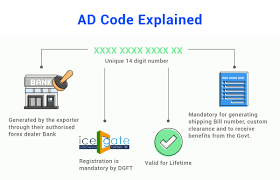Cross-border trade plays a pivotal role in today’s global economy, connecting businesses and consumers across borders and enabling the exchange of goods and services on a massive scale. A robust logistics and documentation system is crucial to facilitate the smooth movement of goods across international boundaries.
Among the many essential elements of this system, AWB and AD codes are of paramount importance. These documents ensure the efficient and secure transportation of goods, making them vital for the success of cross-border trade.
Airway Bills: The Foundation of Air Cargo Transportation
An airway bill, commonly abbreviated as AWB, is a crucial document in air cargo transportation. It serves as both a receipt and a contract, acknowledging the carrier’s receipt of goods and outlining the terms and conditions of shipping. Several key elements make AWB indispensable for successful cross-border trade:
- An AWB is a legal contract between the shipper (consigner) and the carrier (airline). It defines the terms of carriage, such as the type and quantity of goods, destination, and delivery. It also serves as proof of receipt of the cargo.
- It provides a unique identification number for each shipment, enabling real-time tracking and traceability. This feature is invaluable for shippers and recipients, as it ensures transparency and accountability throughout the transportation process.
- Customs authorities use airway bills to verify the shipment’s details, facilitating the smooth flow of goods across borders. Accurate and complete information on the airway bill is essential to expedite the customs clearance process.
- In many cases, it can serve as a negotiable instrument, allowing the consignee to take possession of the goods without presenting the physical document. Its feature streamlines trade and financing arrangements.
- Electronic AWBs (eAWBs) have become more common. They offer greater efficiency, reduce paperwork, and enhance security, further supporting the growth of cross-border trade.
AD Codes: Aiding Customs Clearance and Compliance
Here are the following key points:
- AD codes are part of the Harmonized System (HS) of classification, adopted worldwide. These codes categorise goods into specific groups, making it easier for customs authorities to determine import duties, restrictions, and regulations.
- AD codes are essential for ensuring that imported and exported goods comply with the relevant laws and regulations. They help customs authorities identify items with special permits, licenses, or inspections.
- Customs agencies use AD codes to assess the risk associated with different goods. High-risk goods may undergo extensive inspections, while lower-risk items can move through customs more quickly.
- AD codes are instrumental in compiling trade statistics, which are vital for governments, trade organisations, and businesses. These statistics provide insights into the flow of goods, trade balances, and market trends.
- Accurate and consistent use of AD codes by shipping company and customs authorities streamlines customs processes, reducing delays and ensuring the smooth flow of goods in cross-border trade.
Here Are The Documents Needed for Airway Bills
Commercial Invoice
This document details the transaction, including the type and quantity of goods, their value, and terms of sale (e.g., Incoterms). It’s a reference for filling out the AWB accurately.
Packing List
The packing list specifies the contents of each package, including dimensions, weights, and a description of the goods. This information helps ensure that the airway bill accurately represents the cargo.
Customs Declarations
You may need to provide customs declarations or any relevant documentation required by the customs authorities of the exporting and importing countries. These documents are crucial for ensuring that the cargo complies with customs regulations.
Shipment Details
It includes information on the shipment origin, destination, and any specific handling requirements or instructions for the carrier.
Goods Inspection and Certificates
Depending on the nature of the goods, you may need inspection certificates, quality certificates, or any other relevant documents to prove the compliance of the cargo with international standards.
Here Are The Documents Needed for AD Codes
Product Descriptions
You should have detailed product descriptions for accurate classification under the Harmonized System (HS). These descriptions should cover the composition, intended use, and specification of goods.
Invoice and Packing List
These documents often contain information that can help customs authorities assign the correct AD code, as they provide insight into the nature and value of goods.
Certificates and Licenses
If specific goods require certificates or licenses for import or export, these should be provided to customs authorities to ensure proper AD code assignment.
Regulatory Documentation
Depending on the nature of the goods, you might need to provide documents demonstrating compliance with health, safety, or environmental regulations. It can include certificates of conformity or other regulatory documents.
Additional Information
In some cases, customs authorities might require information or documentation specific to certain types of products or trade agreements.
NimbusPost, as one of the leading shipping aggregators, offers efficient cross-border services across 196+ countries, streamlining international shipping and logistics with innovative solutions for businesses seeking to expand their global reach.
Conclusion
Understanding and effectively utilizing key elements like AWB and AD codes are paramount for the success of cross-border trade. These essential tools facilitate smooth logistics and customs processes and ensure legal compliance, transparency, and traceability, which are crucial for businesses seeking to thrive in the ever-evolving global marketplace. With the correct knowledge and documentation, companies can navigate the complexities of cross-border trade, expand their international reach, and contribute to the growth of the global economy.




